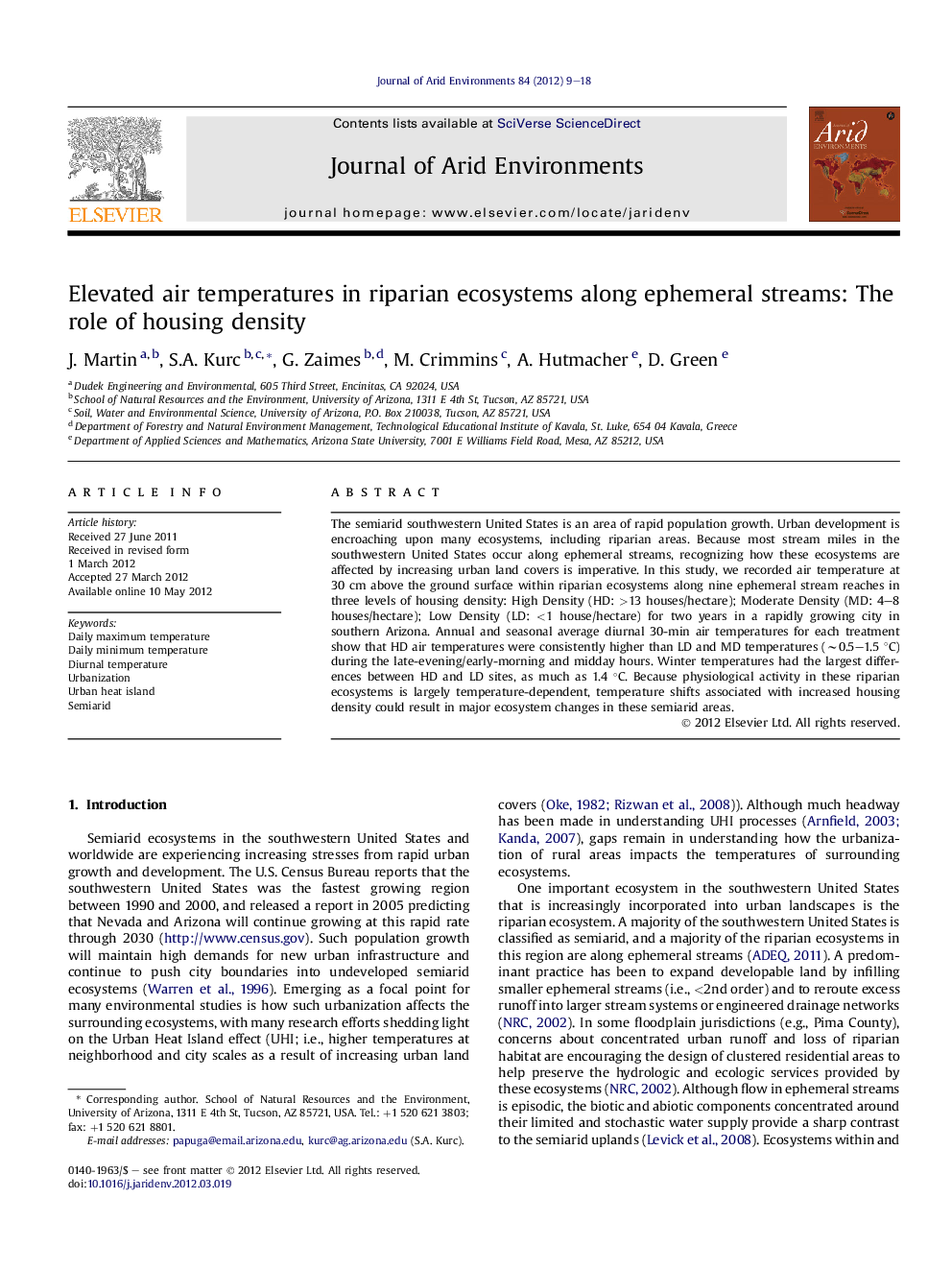| Article ID | Journal | Published Year | Pages | File Type |
|---|---|---|---|---|
| 4393266 | Journal of Arid Environments | 2012 | 10 Pages |
The semiarid southwestern United States is an area of rapid population growth. Urban development is encroaching upon many ecosystems, including riparian areas. Because most stream miles in the southwestern United States occur along ephemeral streams, recognizing how these ecosystems are affected by increasing urban land covers is imperative. In this study, we recorded air temperature at 30 cm above the ground surface within riparian ecosystems along nine ephemeral stream reaches in three levels of housing density: High Density (HD: >13 houses/hectare); Moderate Density (MD: 4–8 houses/hectare); Low Density (LD: <1 house/hectare) for two years in a rapidly growing city in southern Arizona. Annual and seasonal average diurnal 30-min air temperatures for each treatment show that HD air temperatures were consistently higher than LD and MD temperatures (∼0.5–1.5 °C) during the late-evening/early-morning and midday hours. Winter temperatures had the largest differences between HD and LD sites, as much as 1.4 °C. Because physiological activity in these riparian ecosystems is largely temperature-dependent, temperature shifts associated with increased housing density could result in major ecosystem changes in these semiarid areas.
► We monitored air temperature in riparian ecosystems neighbored by urban communities. ► Temperatures were highest in riparian ecosystems neighboring high density communities. ► High housing density elevates temperatures of riparian ecosystems as much as 1.4 °C.
